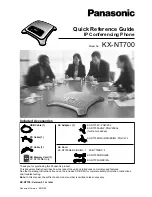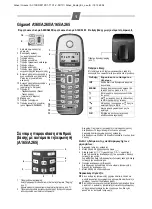
26
z
Do not dispose of the battery in fire. Otherwise, the battery may ignite or explode.
z
Do not connect two poles of the battery with conductors such as cables, jewelries or any other metal material.
Otherwise, the battery is short-circuited and it may burn your body.
z
Do not disassemble the battery or solder the battery poles. Otherwise fluid leakage, overheat, fire, or
explosion may occur.
z
If there is battery leakage, smoke, or strange smell, stop using the battery and keep it away from open flame to
avoid fire or explosion. Then turn to an authorized maintenance engineer for help.
z
If the battery fluid contacts your skin or cloth, wash with clean water immediately to avoid irritation to the skin.
z
If the battery fluid gets into eyes, do not rub your eyes. Otherwise, your eyes can be hurt. Wash with clean
water and go to see a doctor immediately.
z
If there is battery deformation, color change or abnormal heating while you charge or store the battery, take it
out immediately and stop using it. Otherwise, battery leakage, overheat, explosion, or fire may occur.
z
When installing the battery, do not push the battery by force lest battery fluid leak out or the battery crack.
z
Do not take out the battery when the phone is turned on.
z
If you do not use the battery for a long time, store it in normal temperature after charging.
Charger
z
Use the charger approved by the phone manufacturer only. Any violation of this rule may result in fire or
malfunction of the charger.
z
Do not short-circuit the charger. Short-circuiting the charger may cause fire or malfunction of the charger.
z
If the power cord is damaged (for example, the lead is exposed or broken), or the plug becomes loose, stop
using the power cord at once. Otherwise, electric shock, short-circuit of the charger, or fire may occur.
z
Keep the charger dry. Once water or other liquid leaks into the charger, electrical leakage or other faults may
occur.
z
Do not use the charger in a dusty and damp environment.
z
Keep the power cord away from any heating appliance.
z
Ensure the charger is properly plugged into the power socket properly when charging the battery. Improper
insertion may result in electric shock, fire, or explosion. To unplug the charger, pull the plug off rather than tear
off the power cord.
z
Use the AC power supply defined in the specifications of the charger. An improper power voltage can cause
fire or malfunction of the charger.
z
Do not place any heavy object on the power cord of the charger. Do not damage, change, or pluck the power
cord. Otherwise electric shock or fire may occur.
z
When you are charging the battery with the charger, do not touch the plug, power cord or the charger with a
wet hand. Otherwise, electric shock can be caused.
z
Once the liquid such as water leaks into the charger, remove the plug of the charger from the socket
immediately. Otherwise, overheating, fire and other malfunction may occur.
Certification Information (SAR)
THIS DEVICE MEETS THE GOVERNMENT'S REQUIREMENTS FOR EXPOSURE TO RADIO FREQUENCY
ELECTROMAGNETIC FIELD.
Your mobile phone is a low-power radio transmitter and receiver. When it is powered on, it emits low levels of radio
frequency energy (also known as radio waves or radio frequency fields).
Governments around the world have adopted comprehensive international safety guidelines, developed by scientific
organizations, e.g. ICNIRP (International Commission on Non-Ionizing Radiation Protection) and IEEE (Institute of
Electrical and Electronics Engineers Inc.), through periodic and thorough evaluation of scientific studies. These
guidelines establish permitted levels of radio wave exposure for the general population. The levels include a safety
margin designed to assure the safety of all persons, regardless of age and health, and to account for any variations in
measurements.


































